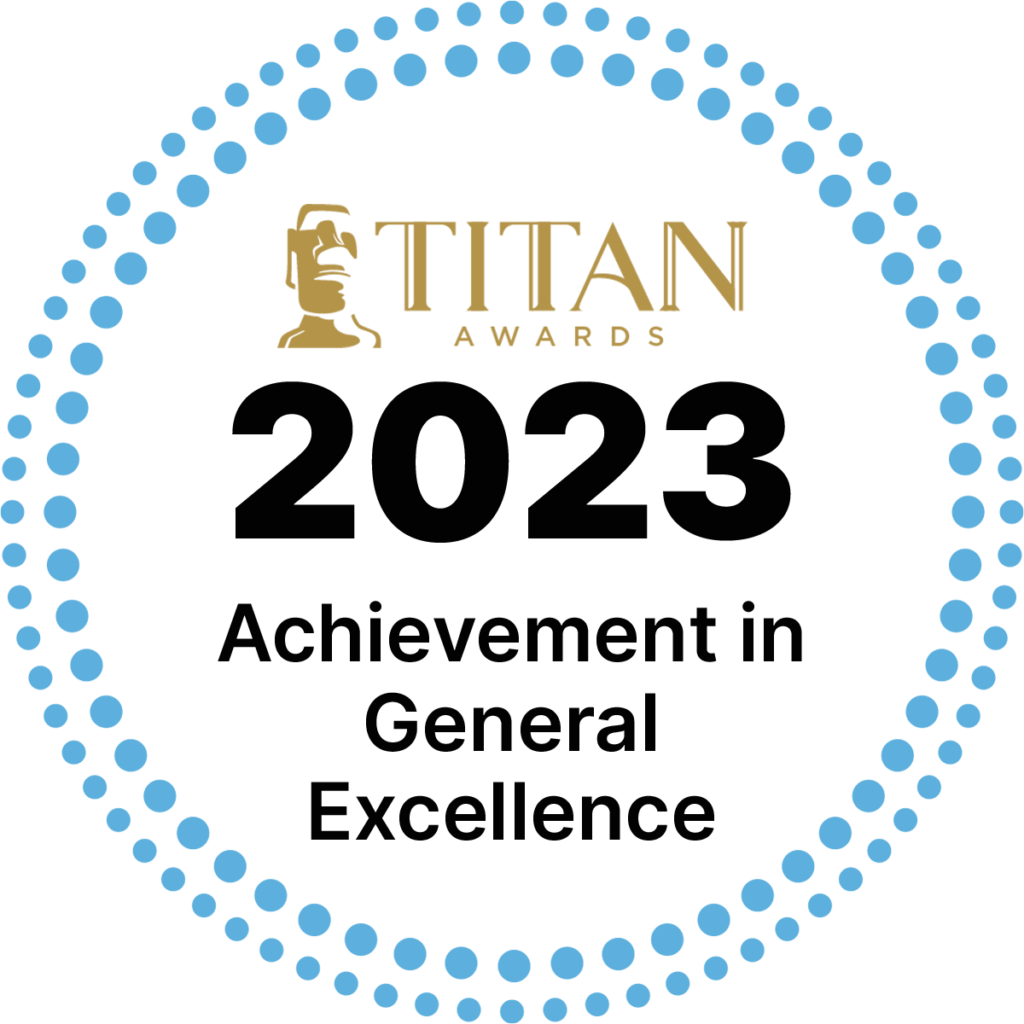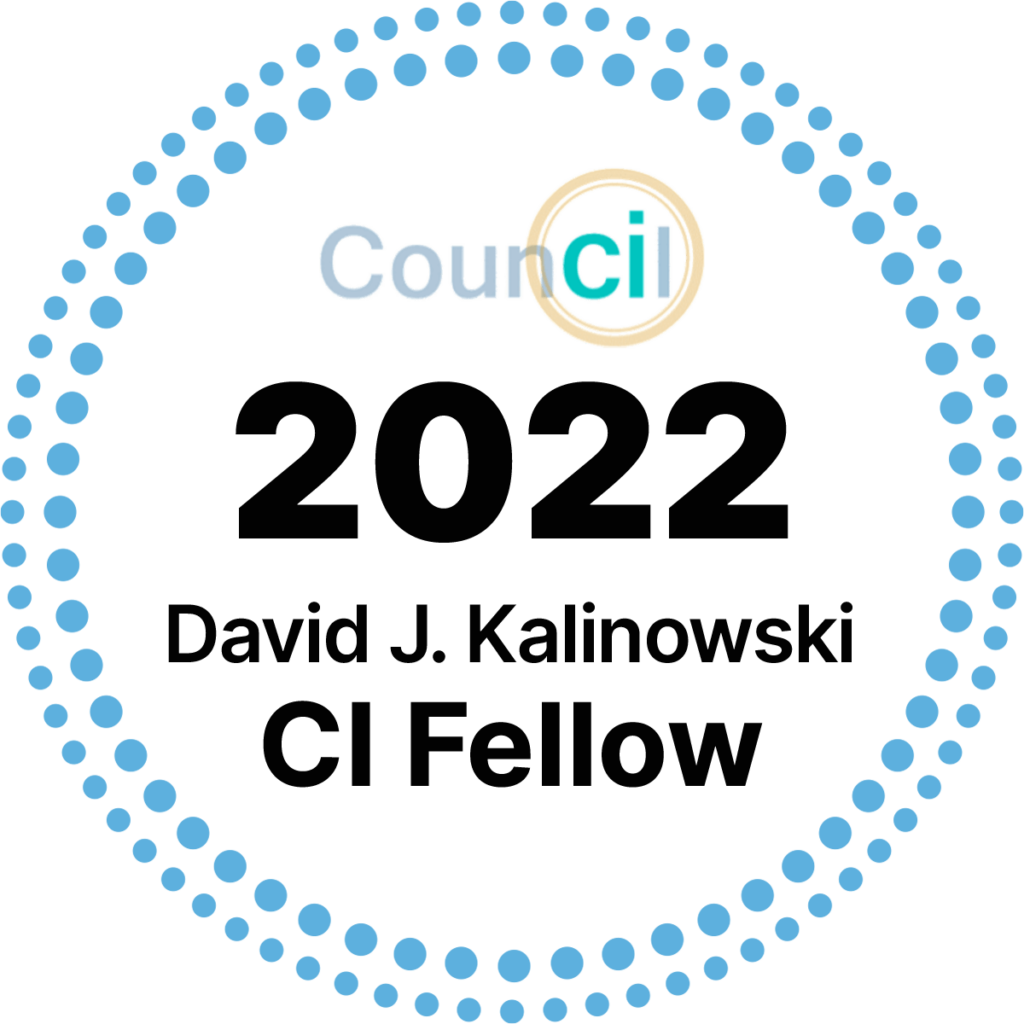Published: September 6, 2019

Dime-a-dozen strategic business plans carry dime-a-dozen results. When creating their organization’s long-term strategic priorities, too many leaders fall victim to templates lacking the substantive measures needed to steer toward a brighter business future — or any future, for that matter.
Worse, others may become overwhelmed with the perceived complexity of the task. Strategic planning’s onus of breaking abstract and lofty visions into measurable daily actions is straightforward in theory, yet time-consuming and resource-intensive in practice, no matter what the leading management theories say.
There is a better way to create a strategic business plan tailored to your organization’s DNA, one that’s devisable, deployable and — ultimately — value-additive for your authentic enterprise growth.
How to Create a Strategic Business Plan: The Foundation

Several terms illustrate the core tenets of a strategic business plan.
- Vision: What do we want our company to look like in one, two, five, 10 years? In other words, what ideal successes, accomplishments and accolades do we want to develop a reputation for?
- Focus areas: How can we get where we want to be? What high-level feats or domains do we want to accomplish that’ll lend a long-term competitive advantage?
- Objectives: How will we scaffold those goals? What substantial start-and-stop activities pave the foundation for a successfully forged focus area?
- Initiatives: What everyday projects and operations will help us gradually achieve our objectives? How will we translate high-level ideas into a set of everyday, operational projects?
- Outcomes: How will we know we’ve completed an objective? How will we track, measure, benchmark and report KPIs across initiatives?
Creating a strategic business plan means developing a template that implements these concepts, then communicates them with all relevant business stakeholders.
Where to Begin When Building a New Business Plan
We’re all familiar with the two-day retreat booked off-premises — the one where business leaders meet, drink coffee and prepare the official annual strategic plan before returning to their offices to commence business as usual. That concept is inherently flawed, because it’s impossible to master business maturity in two days.

The most successful business strategic plans take shape gradually, initiated after a series of competitive intelligence, market research and qualitative analysis benchmarks where your organization is now — versus where it can go.
1. Perform Intelligence-Based External Assessments

Market research reveals various angles to your organization’s current strengths, weaknesses and risk categories. It also compares your operations and structures to competitors in your industry, providing authoritative and data-backed analyses to benchmark capacities.
Without conducting any prior competitive intelligence, your strategic plans have no roadmap designating where your business currently operates and where it strives to go.
Consider any of the following competitive intelligence strategic research before creating any official plan documents.
- Scenario planning: Scenario planning presents a broad, yet methodical, range of circumstances that may agitate your business operations and endeavors. These include industry and market disruptions, competitor breakthroughs, technological advancements and even geopolitical instances that could affect your industry, allowing you to plan accordingly.
- War gaming: War gaming is a set of guided role-playing exercises where organizations immerse themselves into the business models of their top competitors. Businesses can then better preempt the actions and strategies of those competitors, using briefings, market data and additional resources to get ahead of the opposition.
- Competitive profiling: Competitive market assessments see the most productive results through partnering with a strategic planning and market research firm. These firms deliver customized reports that detail your relative competitive position compared to others in the market, therefore empowering smarter investments and resource allocation to detect blind spots, close gaps and establish new opportunities — the goal of any robust strategic plan.
2. Select a Business Strategy Framework

Business strategy frameworks help document the perceived value you provide your customers. More importantly, they detail how you deliver that value — cataloging the products, policies, procedures, personnel and more that make up the anatomy of your operations.
You cannot implement a successful strategic plan altering the course of your business’ future without first pausing to know where you are: your strengths, weaknesses, past performances, etc.
Organizations assess their DNA through one of many strategic planning frameworks:
- Transformational business modeling
- SWOT analysis
- Porter’s five forces
- PESTLE model
- Balanced scorecard methodology
- And dozens more
3. Institutionalize Performance Measuring

Organizations must implement the infrastructure needed to manage, support and refine KPI measurements.
Without such technologies and systems, your organization has no way to hold itself accountable for any initiatives devised under the strategic plan.
Performance measurements for a strategic plan should:
- Be valid and verifiable
- Measure a specific value or business unit
- Inspire desired employee outcomes or behaviors
- Aggregate simply and intuitively, unburdening employees from undue manual data collection practices
- Ultimately answer specific, strategic questions guiding decision-makers toward improved business plans
Best Practices to Create a Successful Strategic Business Plan

There is no objective, “one-size-fits-all” business planning model. Strategic plans must be hand-drawn to the organization spearheading it, with steps, inputs, outputs and procedures as distinct as your handprint.
There are, however, a series of fundamental variables that must guide ideas from abstract to implementable. Follow these best practices to set the stage for more actionable, intelligent and executable strategic business plans.
1. Appoint a Cross-Functional Strategic Planning Team
A genuinely cross-functional team contains representatives from every major business department within your organizational structure. These include, but are not limited to:
- Sales
- Marketing
- Production
- Operations
- Human resources
- Financial planning and accounting
- Research and development
- Purchasing
- IT
- Compliance
- And more
Ensuring all departments have a seat at the strategic planning table is the only way to account for the nebulous perspectives, processes, pain points and priorities that make up the daily operations of a business.
2. Identify Your Primary Focus Areas
Focus areas are the defining goals of your strategic plan. Think of them as a strategic plan’s north stars, the loftier tenets of your plan guiding the upcoming smaller list of pre-planned, individual objectives, initiatives and measurement KPIs. As separate efforts see completion, you step closer toward accomplishing the focus area.
The average strategic plan will contain anywhere from three to six focus areas prorated across three to five years. Those focus areas themselves will waterfall into half a dozen to a dozen concentrated objectives.
It’s essential to have a cross-functional leadership team devise primary focus areas as early as possible, using organizational values as their compass. These focus areas set the stage and will trigger the formation of more granular objectives and initiatives down the road, harmonizing short-term activities with the cited long-term vision.
3. Translate Objectives Into S.M.A.R.T. Goals
S.M.A.R.T. goals have been in the business lexicon for decades. The popularity and continued deployment of this framework is a testament to its nature, which takes abstract and often intangible focus areas and scaffolds them in practical actions, otherwise known as objectives.
S.M.A.R.T. goals have the following components.
- Specific: The goal pertains to a single topic, domain or interest.
- Measurable: The goal has a quantitative perimeter.
- Actionable: It’s possible to initiate the goal with your organization’s current capacities.
- Reasonable: The goal is logical for your market position, resources and values.
- Timely: The goal has a deadline.
Begin cataloging each of your focus domains into one- to two-sentence S.M.A.R.T. objectives. For example, let’s say your organization selects “Financial growth: increasing gross revenue” as a focus area. The S.M.A.R.T. objective of that focus area may then be, “Experience three consecutive monthly recurring revenues of $100,000 within the next 12 months.”
4. Review Budgets
Budget forecasting must run tangential to strategic planning.
In particular, the planning team must begin to consider current versus prospective resource allocation, given the priorities outlined in the S.M.A.R.T. objectives.
You don’t have to funnel every last dollar toward strategic planning goals, yet you should still set up a system that tracks current budget requirements, trends and spend strengths and weaknesses to inform better resource allocation along the plan’s three- to five-year timetable. Reviewing financial allotments during annual and even quarterly budgeting cycles may not cut it when it comes to intelligent strategic planning.
5. Include Relevant Departments and Employees to Cascade Specific Initiatives
Too many strategic plans fail due to siloed departments and unstructured communications. Representatives on the strategic planning committee must make it a priority to collaborate with their teams to relay all relevant focus areas, S.M.A.R.T objectives and budget reprioritizations.
This best practice also allows objectives to transform into their next progression: initiatives. Initiatives will be the micro-projects, action items and process changes executed at the departmental level that, eventually, deliver on the S.M.A.R.T objective. In short, it’s the actual, daily operational changes that will bring about strategic transformation — the mini “sprints” that complete the strategy marathon.
Employee ideation and feedback are imperative here. These are the individuals in the thick of your operations. You can only successfully realize tactical goals when they align with the everyday lived reality of your workforce — which you only aggregate if you rope them in.
Take the objective from earlier: “Experience three consecutive monthly recurring revenues (MRRs) of $100,000 within the next 12 months.” Interdepartmental insight may scaffold a series of initiatives to reach this MRR target, including the following.
- Production: Reduce the average cycle time of per-unit production from 30 minutes to 25 minutes.
- Accounts receivable: Reduce the average order transaction processing time from five minutes to three minutes by implementing more automated authorizations.
- Sales: Increase upsell rates by 15% among repeat customers.
- Marketing: Roll out a new A/B test strategy on key sales pages.
- Sales, marketing, production: Offer a new upmarket service line, subscription or product package.
6. Don’t Forget to Assign Key Performance Indicators to Every Initiative
Performance measurements communicate progress on objectives to teams and stakeholders alike. For every objective outlined under each focus area, you may devise multiple KPIs giving qualitative, expressive measures on the development of that objective — in turn relaying granular feedback on what’s succeeding and what needs more focus.
Structure your strategic planning KPIs to include the following.
- A measure: The unit of progress for a business action item.
- A benchmark: Outside market or industry data to compare KPIs to — and one of the many reasons to perform routine competitive analyses.
- A data source: The system you use to aggregate and store data.
- A report frequency: The amount and means by which you share KPI data.
7. Create a Strategic Plan Dashboard Accessible to All
Strategic planning dashboards create a visual representation of the strategic business plan, complete with every initiative, input and process change, as well as what objective they’re under. They most often live within an employee-accessible project management tracker or strategy management software.
That representation is cohesive, yet comprehensive. It serves as the project management-like repository for every component building up to the core focus areas of the strategic plan, while also creating a breadcrumb trail of accountability and workflows.
8. Continually Evaluate Performance Data
KPI reviews are an ongoing endeavor, not a one-and-done activity by a sole team member. In the strategic management maturity model, organizations which execute frequent and fluid KPI evaluations move closer to the fifth and highest level of business maturity evolution, continuous improvement.
Regular performance data reviews also empower organizations to refine initiatives they initially forecasted to contribute to an objective’s completion, but are proving to underperform. The earlier organizations spot these data discrepancies, the sooner they can take steps to put the strategic plan timeline back on track.
9. Prioritize Downstream Communication Before Plan Changes
If KPI analysis reveals any gaps or discrepancies, funnel them back into the initiatives occuring in the micro-environment. Before implementing them, though, department leaders must communicate these adaptations as well as their KPI-driven logic to their teams, ensuring buy-in and smooth re-implementation of the redefined action items.
Remember, your entire strategic plan — with its focus areas, objectives and building-block initiatives — takes shape across years, not months or weeks. Frequent departmental status meetings may seem like an endless game of management-employee ping-pong, but they are essential to keep your strategic plan execution on track.
Select change communication strategies that fit your organizational culture and structure:
- Granular departmental strategic planning meetings reviewing KPIs and new initiative directions
- One-on-one meetings between managers and team members
- Department-wide email memos and reviews
- Reports from project management offices or the office of strategy management, within project management software or similar digital strategy platforms
10. Consider Ongoing Accountability Efforts
Strategic planning consultants or firms provide a suite of services complementary to every stage of strategic planning.
Insights drawn from their research services are valuable to review before drafting a tactical business plan and during plan implementation, as well as when maintaining and managing business improvements in the post-objective achievement phase.
At their core, strategic planning firms profile clients’ strengths, weaknesses, growth areas, competitive differentiation opportunities and much more. They deliver quantitative and qualitative data that leverages superior strategic insights into:
- User experience and voice-of-customer surveys and reports
- Competitive research profiles and market assessment
- Transformational business modeling
- War gaming
- Risk scenario planning
- And much more
8 Strategic Business Planning Tips to Adopt Today

With its surgical ability to cut through the noise and establish shared goals, few initiatives harmonize people, processes and technology like intelligent strategic business planning.
The tenets of a strategic plan will naturally vary, yet several business planning best practices consistently boost implementation rates.
1. Strategic Thinking Is Not Strategic Planning
Which team member would you prefer to have: the long-term critical thinker with genuinely innovative ideas, yet rare follow-through, or the methodical practitioner, the one who goes above and beyond in their work ethic, but may not make vocal contributions to a strategic vision?
Lightbulb moments of tactical brilliance have a time and a place. However, ideas must walk the walk and talk the talk. Leaders must be able to translate focus areas into enterprise-enriching objectives with clear outcomes and performance measurements. Anything less merely spins the strategic wheels without traction.
2. Set up Feedback Channels
Strategic planning relies on the comprehension, participation and overall buy-in of downstream employees in every department. Make it clear you value their input. After all, these employees perform the everyday work across a plan’s implementation steps and initiatives, which are the building blocks to complete a strategic objective.
Create two-way feedback channels for staff to lend their thoughts and insights. Send out surveys to temperature-check the latest projects’ strengths, pain points and processes that may need adjustment. Encourage department and team leaders to conduct one-on-one sessions with their employees to garner feedback on the everyday reality of executing the strategic plans. These insights are invaluable in creating a smoother strategic planning pipeline, today and tomorrow.
3. Make Meetings Granular
Many organizations practice the default annual or quarterly strategic report. While these are vital presentations, ongoing strategic planning is more successful when holding smaller, more frequent meetings at the departmental and executive level.
These meetings should focus on only a handful of projects or initiatives, ones cascading toward a higher strategic objective — rather than just jumping to the abstract goals or reviewing the entire broad swath of the plan itself.
4. Adopt a Business Strategy, Then Worry About Making It Agile

Continuous business planning — compared to ad-hoc static or even structured, but reactive, planning— is the goal of many organizations. Standardized, ongoing planning allows organizations to change objectives on the fly without unraveling the strands of the entire plan.
Strategic planning must walk before it can run. Evolving up the strategic management maturity model into the continuous improvement category is a process that takes time, commitment, tweaks and recurring competitive market research to ground your business vision in reality.
5. Invest in Training
Schedule employee training at the onset of your strategic planning timelines. Doing so ensures the employees executing daily strategic initiatives are fluent and familiar with the tools they need to actually perform their roles.
Consider employee trainings for any of the following:
- New technology integral to strategic initiative execution, including strategy management software or new project management trackers
- New project workflows
- New performance measurement trackers, reports and data systems
- Any additional new infrastructure related to the execution of strategic priorities
6. Remember Your Customers/Clients
Customer insights inform some of the highest-value, propelling and profitable strategic priorities. Ensure your leaders aren’t putting the blinders on, creating insular objectives detached from real-world end users. Perform regular customer insight research such as voice-of-customer surveys and user experience syndications. You will enrich your short- and long-term plans as a result.
7. Integrate Continual Competitive Research and Market Assessments
Like voice-of-customer and user experience, competitive intelligence (CI) empowers businesses to create hyper-tactical and hyper-appropriate strategic objectives informed by market positions.
CI and strategic planning are like sparks and tinder. Data from CI and market analysis serves to ignite the very issues, gaps and opportunities a strategic plan remedies, including:
- Articulating your current strong market segments
- Pinpointing your top competitive threats
- Identifying strategies to mitigate, if not beat, those threats
- Narrowing paths and strategic choices to achieve competitive differentiators — e.g., the strategic plan
Partnering with a professional CI and market research firm yields the most robust — and actionable — research. These consultants create detailed profiles pinpointing exact strength and growth areas, then assist in creating milestone roadmaps that close those gaps and propel strategic action.
8. Keep Principles and Values First
Strategic planning is more organic and more primed for success when its objectives align with company culture. These values are the DNA of your company. Reference them when developing your short- and long-term strategies, and those strategies will be far more likely to stick.
Need a Map Through Your Business’ Strategic Maze?
Explore Proactive Worldwide’s portfolio of strategic planning services.
Proactive Worldwide specializes in personalized research packages, deployment models and overall strategic planning consultancy and support for organizations that have had enough of shapeless strategic plans. By personalized, we mean personalized — no client receives the same pre-published market findings, data sets or regurgitated transformation templates.
Reach out when you’re ready to move beyond basic business strategy.














